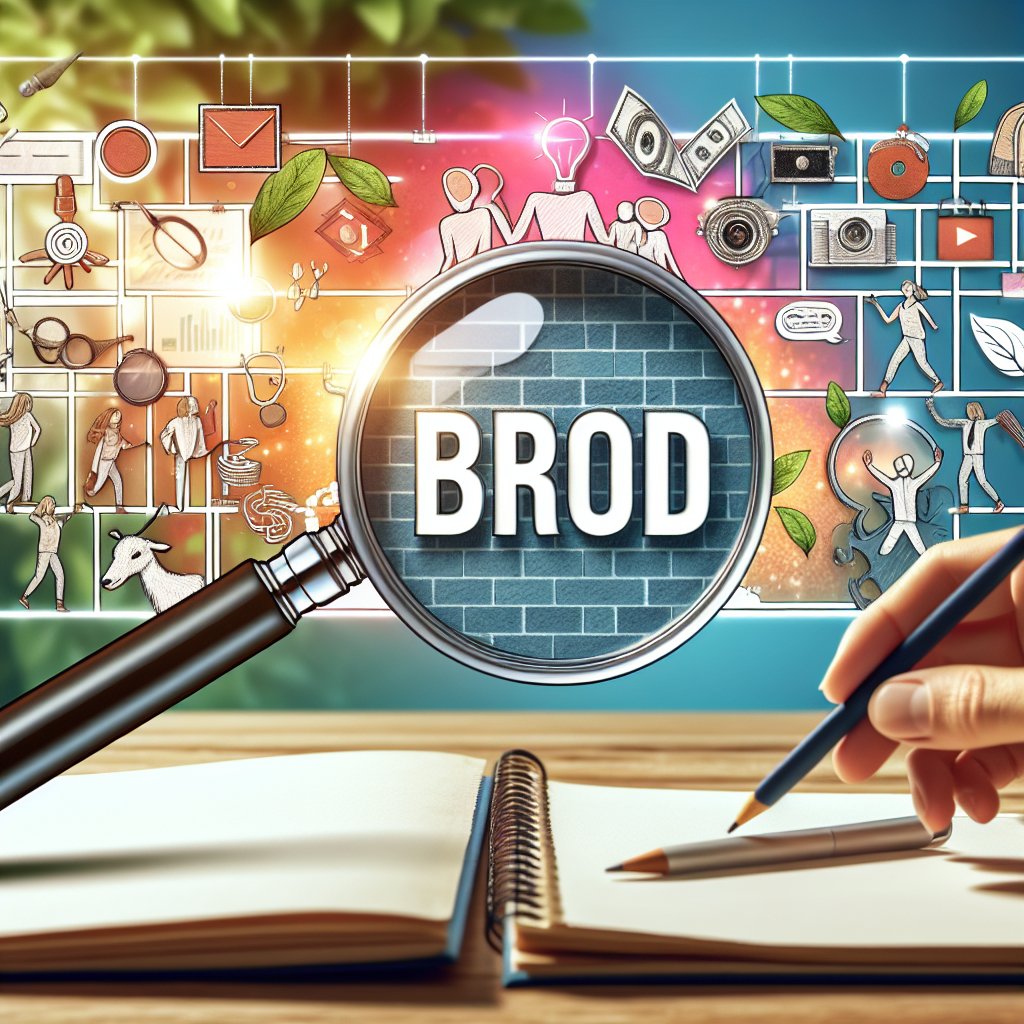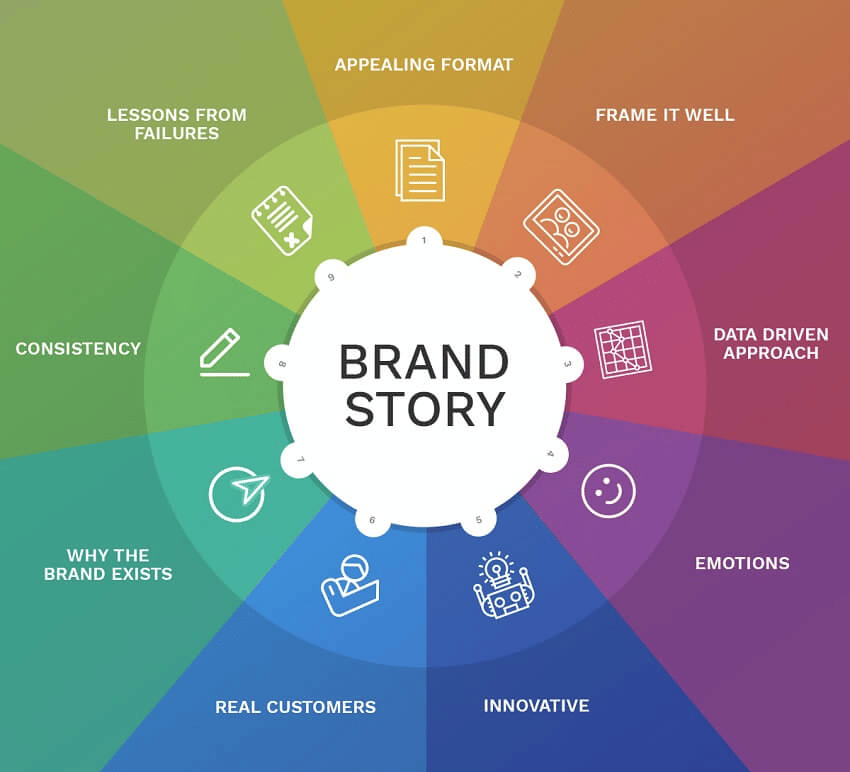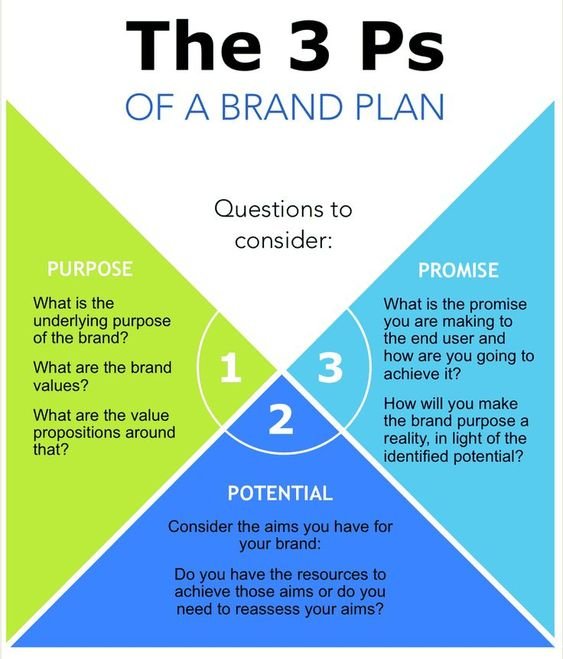Uncover the secret to crafting captivating brand narratives that leave a lasting impact on your audience. Discover the power of storytelling!

Image courtesy of via DALL-E 3
Table of Contents
- Introduction to Branded Content
- The Magic of a Good Story
- Creating Characters for Your Brand Story
- Crafting a Captivating Plot
- Setting the Stage: The Importance of Setting
- Using Visuals to Tell Your Story
- Engaging Your Audience
- Measuring the Success of Your Brand Story
- Summary of Key Points
- Frequently Asked Questions (FAQs)
Introduction to Branded Content
In today’s world, where we are constantly bombarded with advertisements and commercials, brands are finding new and creative ways to stand out and connect with their audience. One of the most powerful tools they use is branded content. But what exactly is branded content, and why is it so important in marketing? Let’s explore this fascinating world of brand stories and storytelling.
What is Branded Content?
Imagine watching your favorite TV show or browsing through your preferred YouTube channel. Have you ever noticed how some content subtly features a product or a brand without directly advertising it? That’s branded content! It’s like a story that includes a brand or product in a natural and seamless way. For example, a character in a show might use a specific brand of cereal, or a YouTube creator might mention a favorite brand of sneakers during their video.
Why Brands Tell Stories
Stories have a magical way of capturing our attention, making us care, and helping us remember things. Brands understand this power of storytelling and use it to create a connection with their audience. By telling compelling stories, brands can evoke emotions, build relationships, and leave a lasting impression on people’s minds. So, the next time you see a brand sharing a story, remember that they are not just selling a product; they are creating an experience for you to enjoy and remember.
The Magic of a Good Story
Stories have a special kind of magic that can transport us to different worlds and make us feel all kinds of emotions. But what makes a story so captivating? Well, a great story usually has three important elements: characters, setting, and plot.
Characters are like the stars of the show. They are the ones who go on adventures, face challenges, and learn important lessons. Think of your favorite characters from books, movies, or even video games. They’re the ones you root for, laugh with, and sometimes even cry over.
The setting is where the story takes place. It could be a magical land filled with dragons and wizards, a futuristic city with flying cars, or even just a cozy little town where everyone knows each other. The setting helps create the mood and atmosphere of the story, making it more exciting and immersive for the audience.
And finally, we have the plot. The plot is like the roadmap of the story. It’s the series of events that unfold, leading the characters from one adventure to another. A good plot usually has some kind of conflict or challenge that the characters have to overcome, keeping us on the edge of our seats to see what happens next.
How Brands Use Stories
Now, you might be wondering, how do brands use these storytelling elements to capture our attention and make us care about their products? Well, think about those funny commercials you see on TV or those exciting web series you watch online. They often have characters you can relate to, settings that grab your interest, and plots that keep you hooked.
For example, have you ever seen the M&M’s characters in their colorful and quirky ads? Those little guys have their own personalities and go on all sorts of adventures. They make you laugh and maybe even make you crave some chocolatey treats.
Or what about Tony the Tiger from Frosted Flakes? He’s a cool mascot who cheers on kids to start their day with a delicious bowl of cereal. He’s friendly, energetic, and always ready for some fun. These brand characters become like friends to us, making us feel good and creating a connection with the brand.
Creating Characters for Your Brand Story
In order to make your brand story more engaging and memorable, it is essential to create interesting and relatable characters that can connect with your audience. Characters play a significant role in capturing the attention of your viewers and keeping them invested in your brand narrative.

Image courtesy of www.brandedagency.com via Google Images
What Makes a Good Character?
A good character is someone who stands out and has unique traits that make them appealing to your audience. Whether it’s being funny, adventurous, or kind, characters need to have qualities that resonate with the viewers. By creating characters that kids can relate to, you can establish a strong emotional connection that will make your brand story more impactful.
Examples of Brand Characters
Some brands have successfully created iconic characters that have become synonymous with their brand identity. Take, for example, the lovable M&M’s characters or Tony the Tiger from Frosted Flakes. These brand mascots have become instantly recognizable and have helped build a strong brand presence. By studying these examples, you can learn how to develop characters that not only appeal to your audience but also enhance your brand story.
Crafting a Captivating Plot
In order to keep your audience engaged and interested in your brand story, it’s crucial to craft a captivating plot that hooks them from the start and keeps them wanting more.
The Role of Conflict
Conflict is like the exciting problem that characters in a story need to solve. It’s what makes the story interesting and keeps us wondering what will happen next. In brand stories, conflict can be anything from a character facing a big challenge to trying to overcome a tough obstacle. For example, think of your favorite superhero trying to defeat a villain – that’s a conflict that keeps us on the edge of our seats!
Resolution and Happy Endings
After all the excitement and challenges, it’s important to resolve the conflict in a satisfying way. This means that the characters find a way to solve their problems and everything ends happily. Happy endings make us feel good and leave us with a warm, fuzzy feeling inside. In brand stories, the resolution could be a character achieving their goal or overcoming their fears, leaving us with a smile on our faces.
Setting the Stage: The Importance of Setting
In every great story, the setting plays a crucial role in creating an immersive experience for the audience. Just like how the right backdrop can make a photo pop, the setting of a story helps to bring the characters and plot to life. Let’s delve into why setting is so important when crafting brand stories.

Image courtesy of www.linkedin.com via Google Images
Choosing the Right Setting
Imagine a story that takes place in a magical land filled with talking animals and colorful castles. Doesn’t that sound exciting? Different settings like this can transport the audience to new worlds and spark their imagination. Just like picking out the perfect outfit for a special occasion, selecting the right setting for a story can make all the difference in how it is received.
Setting in Brand Stories
Brands also pay close attention to the settings they use in their stories. For example, Coca-Cola often sets its holiday campaigns in the enchanting North Pole, where Santa Claus and his elves reside. This choice of setting helps to create a festive and magical atmosphere that resonates with audiences during the holiday season. By carefully selecting a setting that aligns with their brand message, companies can enhance the storytelling experience and connect with customers on a deeper level.
Using Visuals to Tell Your Story
Visuals play a crucial role in bringing stories to life. Imagine watching your favorite cartoon without any colorful images or exciting animations – it just wouldn’t be as fun, right? High-quality visuals, like clear and colorful images, or vibrant videos, can instantly catch people’s eyes and make stories more captivating.
Examples of Effective Visuals
Many brands understand the power of visuals in storytelling. Have you ever seen LEGO’s amazing stop-motion animations? They use these creative videos to showcase their building sets in action, sparking the imagination of kids worldwide. And let’s not forget about Disney’s beautiful character artwork – from Mickey Mouse to Elsa, these iconic visuals bring their stories to life in a magical way.
Engaging Your Audience
Have you ever felt excited when your favorite TV show or book asked you to vote on something or share your ideas? That’s because getting the audience involved makes the story even more fun! Brands do the same thing by asking for your thoughts and opinions. Sometimes they even have contests where you can win cool prizes by participating. It’s a way for them to make the story feel like it belongs to everyone.

Image courtesy of contentmarketinginstitute.com via Google Images
Social Media Engagement
Social media is like a big playground where brands can have fun and interact with their audience in all kinds of ways. Companies use platforms like Instagram, TikTok, and Twitter to share stories, behind-the-scenes looks, and even funny memes with their fans. By being on social media, brands can show their human side, listen to what people are saying, and join conversations that matter to their audience.
Measuring the Success of Your Brand Story
Once you’ve crafted your brand story, it’s essential to gauge its impact and effectiveness. There are several ways to assess how well your story is resonating with your audience.
Getting Feedback
One crucial way to measure the success of your brand story is by collecting feedback from your audience. This can be done through surveys, comments on social media posts, or direct messages. By listening to what your audience has to say, you can understand what aspects of your story are engaging and what might need improvement.
Looking at Metrics
Another method to measure the success of your brand story is by analyzing key metrics. These metrics can include the number of views your story has received, the amount of likes or shares it has garnered on social media, or even the increase in website traffic after launching your story. By tracking these metrics, you can get a sense of how well your story is performing and whether it is achieving your marketing goals.
Summary of Key Points
In this blog post, we explored the world of branded content and how brands use compelling brand stories to connect with their audience. Branded content is all about telling stories that resonate with people and make them care about the brand.

Image courtesy of www.brandedagency.com via Google Images
We discussed the magic of a good story and how key elements like characters, plot, setting, visuals, and audience engagement play a crucial role in creating a captivating narrative. Stories help brands stand out and build a lasting connection with their customers.
By understanding the importance of good storytelling and incorporating these key elements into their brand stories, companies can create powerful narratives that leave a lasting impression and drive engagement with their audience.
Want to turn these SEO insights into real results? Seorocket is an all-in-one AI SEO solution that uses the power of AI to analyze your competition and craft high-ranking content.
Seorocket offers a suite of powerful tools, including a Keyword Researcher to find the most profitable keywords, an AI Writer to generate unique and Google-friendly content, and an Automatic Publisher to schedule and publish your content directly to your website. Plus, you’ll get real-time performance tracking so you can see exactly what’s working and make adjustments as needed.
Stop just reading about SEO – take action with Seorocket and skyrocket your search rankings today. Sign up for a free trial and see the difference Seorocket can make for your website!
Frequently Asked Questions (FAQs)
Common Queries
Here are some simple answers to common questions you might have about branded content and storytelling:
What is a brand character?
A brand character is a fictional or animated figure that represents a brand. These characters help make the brand more memorable and relatable to its audience. For example, think of characters like the Geico gecko or the Pillsbury Doughboy.
Why do brands use stories?
Brands use stories because they help people connect with the brand on an emotional level. Stories can make a brand more memorable, help it stand out from competitors, and create a lasting impression in the minds of consumers.







